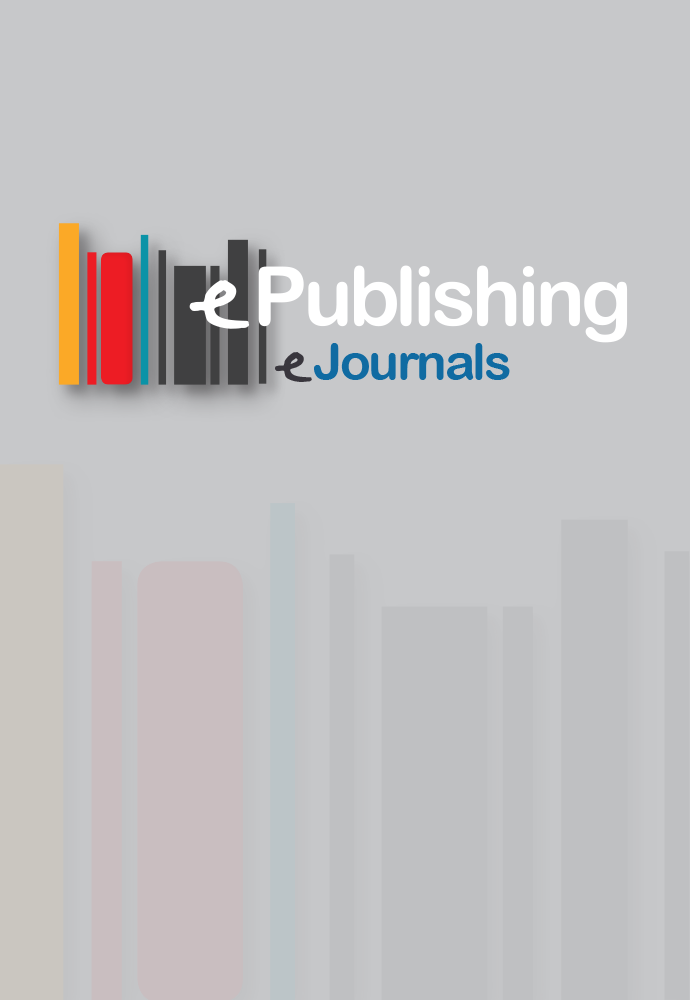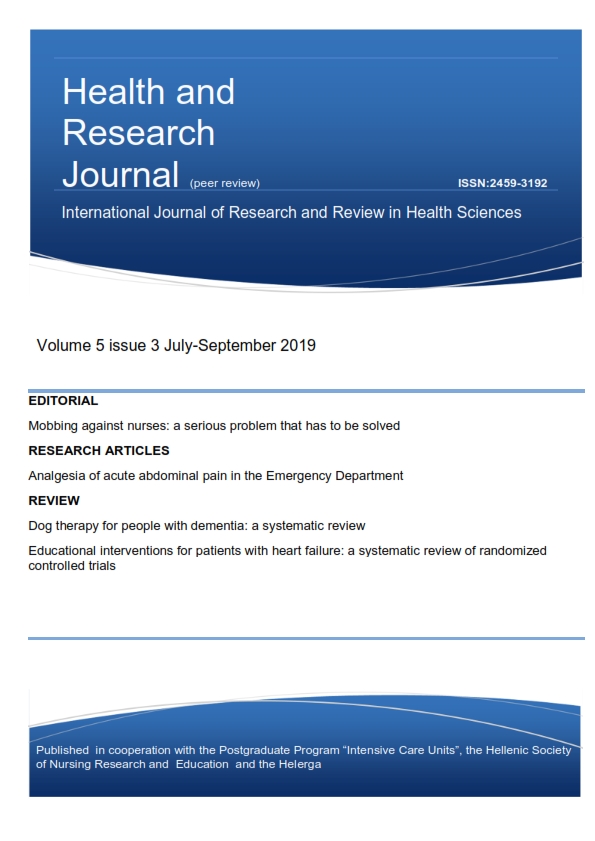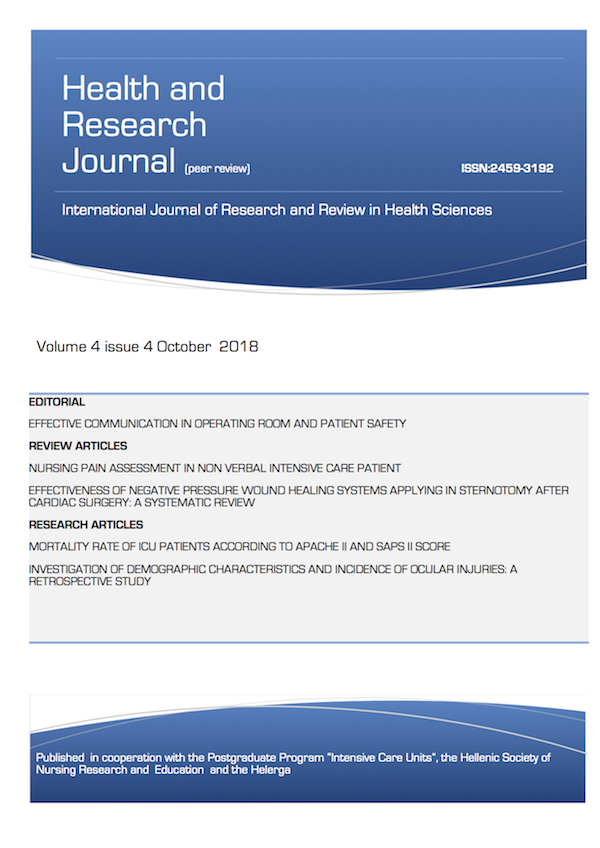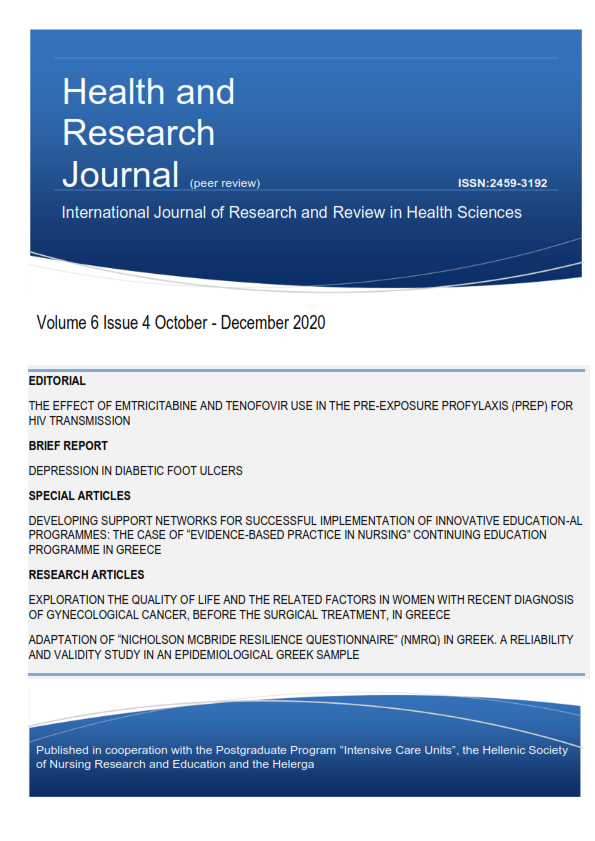Polytrauma patient residence time to the emergency department of a public general hospital in Attica

Abstract
Introduction: In Emergency Department (ED) polytrauma patients accept emergency nursing care and follows a complete diagnostic procedure and therapy. The required time is called time to treatment-length of stay trauma patients in ED.
Aim: The aim of the present study was the registry of the trauma patient management and treatment to the ED of a public general hospital in Attica.
Material and Methods: The studied sample consisted of 95 trauma patients aged over 14 years old with Injury Severity Score >15 (ISS>15) who were admitted to the ED of a general hospital in Athens and having to complete the whole diagnosis and treatment in the ED from February of 2014 until January of 2015. Data analysis was performed with the statistical package SPSS ver. 19.
Results: The majority of the trauma patients were Greek men aged until 45 years old. The first reason of transportation was traffic accident, drifting was the second reason. The mean time of trauma patients at ED until their admission to the appropriate clinic, was 3, 3 hours (210 min), and has been influenced by the diagnostic tests time, the diagnostic tools and the number of the doctors, per major, who have been concerned the trauma patient. The Injury Severity Score has been influenced by the number of the doctors per major, the method of diagnosis and the admission to the appropriate department. The trauma patients who were not wearing seat belt and drifting, have the most seriously trauma according to the ISS. From the Patients who had 3-8 Glasgow Coma Scale the 45.5% (n:5) had admitted to Intensive Care Unit, respectively the 18.2% (n:2) had admitted at neurosurgery and surgery clinic.
Conclusions: Polytrauma patient residence time to the Emergency Department is determinant and directly related with mortality and the overall outcome of the polytrauma patient during his hospitalizationArticle Details
- How to Cite
-
Evangelatos Α., Armata Ε., Fasoi, G., Stavropoulou – Κelesi Μ., Marvaki, C., & Papageorgiou, D. (2017). Polytrauma patient residence time to the emergency department of a public general hospital in Attica. Health & Research Journal, 3(3), 130–144. https://doi.org/10.12681/healthresj.22213
- Section
- Original Articles
Copyright notice:
The journal "Health and Research Journal" reserves the rights for copyright of the content of the website and also the copyright of the articles published.
By virtue of their appearance in this journal, the articles are free to be used for non-commercial purposes. However, the articles cannot and must not be used in anyway, published elsewhere or modified without any reference to the author and the first publication of the article.








